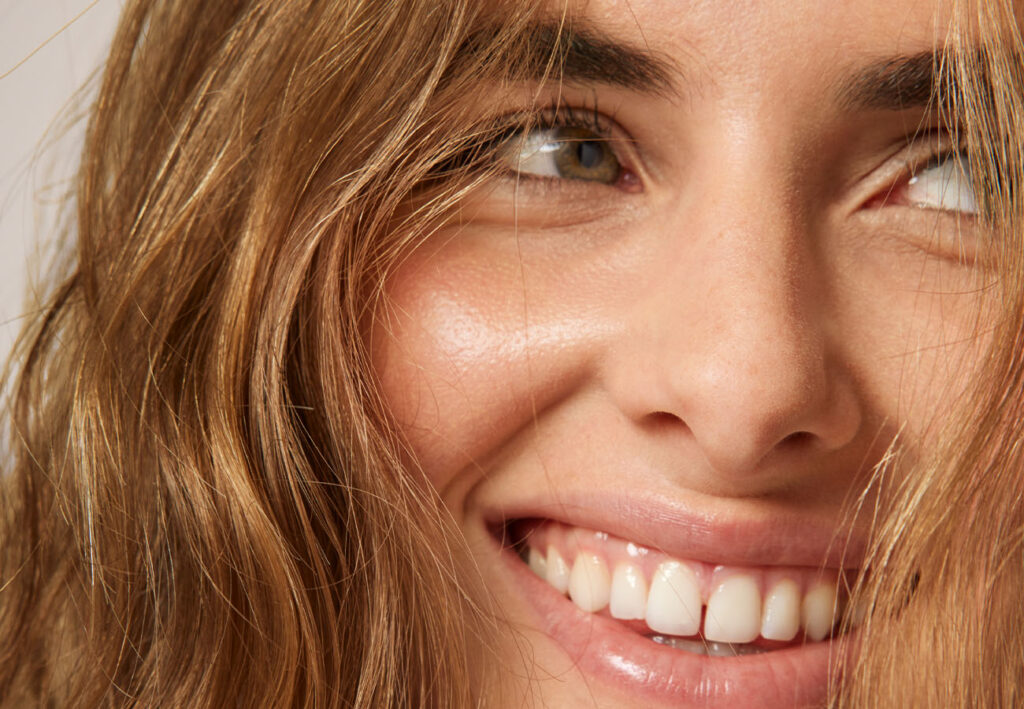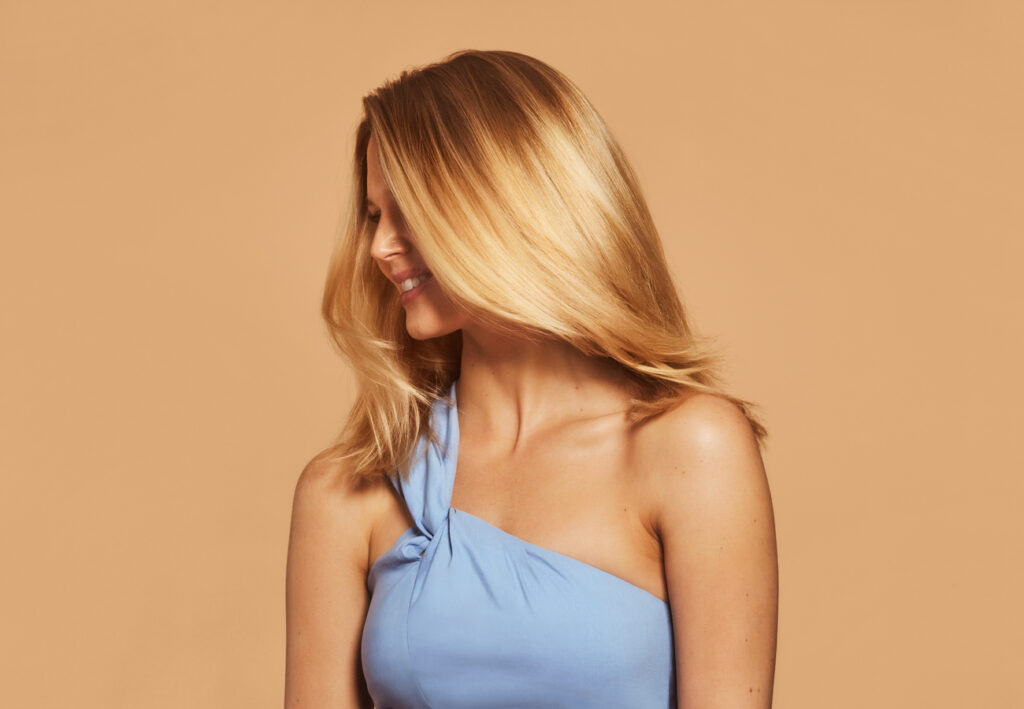Many of us spend tons of time, energy, and money on our hair. This is especially true when it comes to creating (and maintaining) the perfect hair color. However, this can be challenging as you get older, and your hair starts to turn gray and white.
It’s not unusual to start booking extra salon appointments or buying root touch-up products that are masking your real hair color—and that could actually be hurting it in the process. So before you head to the salon again, it’s a good idea to learn about why hair turns gray, what you can do about it, and how you can even learn to love your new natural color.
Why Does Hair Turn White and Gray?
The pigment in our hair is caused by melanin— the same pigment that is also responsible for our skin color. Gray hair is caused by a loss in melanin, whereas white hair does not have any melanin at all. As you age, your hair produces less and less melanin that leads your hair to appear gray, and then eventually white.
However, the speed that your hair loses melanin is largely attributed to genetics. For example, in some families, it’s extremely common for people to have hair turn gray and white in their 20s. This just goes to show that genetics play a huge role in your hair turning gray.
However, there are some additional reasons outside of genetics and age that may cause your hair to turn white and gray prematurely:
- Vitiligo: Vitiligo is a condition characterized by a lack of melanin in the skin and hair. This causes white patches to appear in these areas. These affected areas often start small and grow. It can also affect your eyelashes, eyebrows, and beard.
- Alopecia areata: Alopecia is an autoimmune disorder that causes chunks of your hair to fall out. This disorder especially affects colored hair follicles and can leave you with only gray hair left! The exact cause of alopecia is unknown, but it may have something to do with genetics. The good news is that there are things you can do to help your hair grow back— however, it may grow back completely gray.
- Thyroid disease: Hormones can also play a role in the graying of your hair. And since your thyroid releases these hormones, it can be a common cause of premature gray hair. Hyperthyroidism occurs when your thyroid is releasing too many hormones into the body that can actually end up harming the heart. Hypothyroidism, on the other hand, is more common and is indicated by an underactive thyroid that doesn’t release enough hormones.
- Nutritional deficiencies: Premature gray and white hair can also be caused by certain nutritional deficiencies. If you eat a balanced and healthy diet, you shouldn’t have any problems, but sometimes it’s difficult for people to get all the nutrients they need from food alone. This is especially true if you follow a restricted diet. If you aren’t getting enough vitamin B12, folate, or iron, you could be causing your hair to gray! So make sure to eat foods that are good sources of vitamin B12 like fish, meat, poultry, eggs, and milk products. Some good sources of folate include dark leafy green vegetables, fruits, nuts, beans, and seafood. Finally, some good sources of iron include beans, tofu, whole-grain bread, and dark leafy green vegetables.
- Stress: The effect of stress on hair is still being researched, although there is still some evidence that stress can cause hair loss and can interrupt the production of pigment-causing melanin in your hair follicles that can turn hair gray and white. So even though stress might not be the only reason why your hair is graying, taking steps to lower your stress levels is never a bad idea.
Can You Prevent Hair From Turning White or Gray?
In most cases, graying hair is a natural part of aging and can’t really be prevented. However, there may be some things that you can do to slow the onset of gray and white hair and keep your original hair color for as long as possible. Here are some things that you should do if you want to avoid graying early:
- Smoking cigarettes has been linked to premature graying hair. So if this is something that you are concerned about, you should stop smoking. Not only is quitting good for your hair, but it’s also good for your health. So even though it may be difficult, it will be well worth it in the end.
- Maintaining a healthy weight and a healthy diet can also prevent premature graying. So always make sure to get enough exercise and eat a balanced diet with enough protein, fruits, vegetables, and healthy fats. Your hair, your physical appearance, and your overall health will benefit as a result of these lifestyle changes.
- Protecting your hair from damage by things like sun, chemicals, and pollution can also prevent premature graying. When you’re out in the sun, protect your hair with a hat or a scarf just as you protect your skin with sunscreen!
Even though there might not be anything you can do to really prevent your hair from turning gray or white, and there’s really nothing you can do to turn it back naturally, you can still embrace your natural color as you age.
How to Embrace Your Natural Color as You Age
In recent years, gray hair has made a name for itself as a certified beauty trend! Even young women in their 20s are dyeing their hair chic gray colors to look older and more sophisticated. So before you reach for the hair dye, here are some ways that you can embrace your natural gray and white hair:
- Get gray highlights: The easiest way to transition to your natural gray or white hair is to get highlights that closely match your new natural color. That way, you won’t have unsightly roots and patches growing out, and it will be more of a subtle change.
- Use the right products: While growing out your natural grays and whites, you need to use the right hair products with beneficial natural ingredients made by reputable companies like Prose. For example, our pre-shampoo hair mask can help keep even your most unruly hairs moisturized and smooth, thanks to ingredients like jojoba oil, hyaluronic acid, castor oil, argan oil, honey, vitamin E, and so much more! Prose even offers custom formulas to really help you embrace your natural color.
- Get a good chop: Another thing you can do to embrace your natural color is to give your hair a good chop so that your color grows out more quickly and looks better faster.
Conclusion
Your hair turning gray or white doesn’t have to be a traumatic transition. In fact, it could be a good thing! So stop dyeing your hair and embrace your natural color no matter how old you are.





